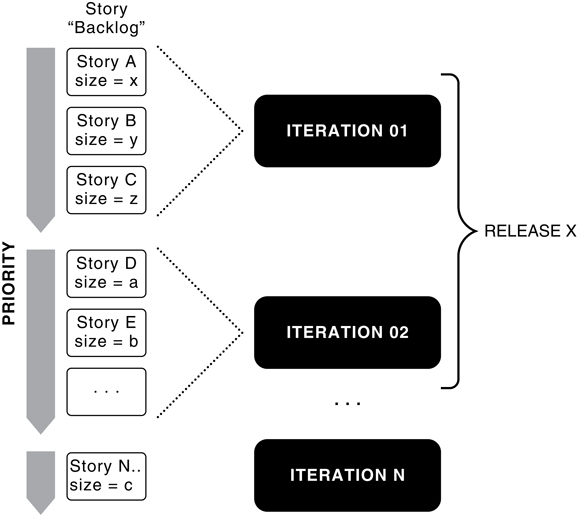Planning at Enable Quiz
Organizing Around Iterations
Figure 6.5 summarizes the planning process Andrew and Mark completed for beta.
Figure 6.5 Organizing Iterations

First, we have the story backlog. Here, Andrew prioritizes the list of stories based on his assessment of what he feels is critical for a minimum viable product and some input from Mark on dependencies between iterations. The classic method of doing this is to use index cards to create the stories and post them on bulletin boards to monitor their progress. Because the team is distributed, Andrew and Mark did this with a few custom fields and reports in the open-source feature and bug tracker, Bugzilla. The planning and prioritization exercise is iterative: Andrew prioritizes, Mark estimates the size of the stories, and Andrew may reprioritize based on the size of the stories. Sizing in agile is typically done with story points or some other arbitrary measurement calibrated over iterations to determine the amount of units per iteration the team can complete. The team plans to use four-week iterations. In each iteration, the team estimates and agrees on a target list of stories, executes them, tests them, and delivers them. They plan four iterations to beta, the fourth being the beta release. With agile, a fixed date means flexible content, so it will be important for Andrew to keep an eye on things as his team moves ...
Get Starting a Tech Business: A Practical Guide for Anyone Creating or Designing Applications or Software now with the O’Reilly learning platform.
O’Reilly members experience books, live events, courses curated by job role, and more from O’Reilly and nearly 200 top publishers.

